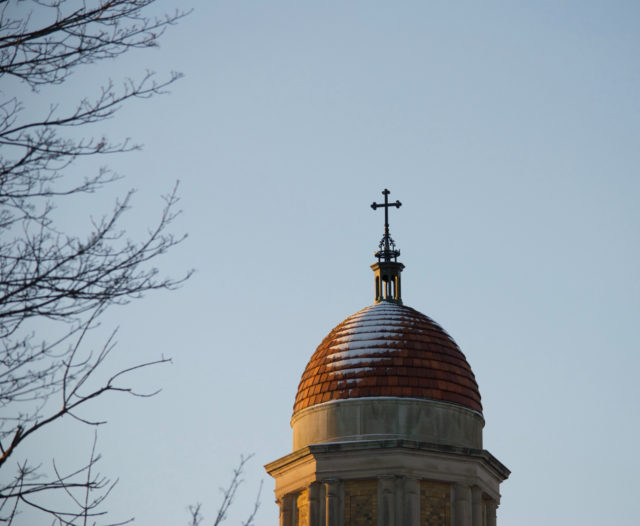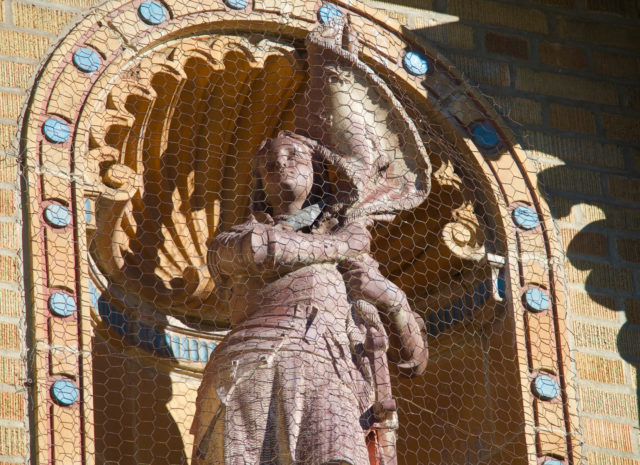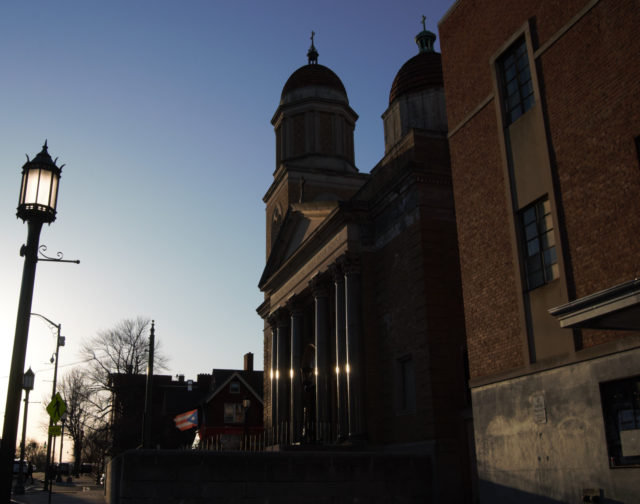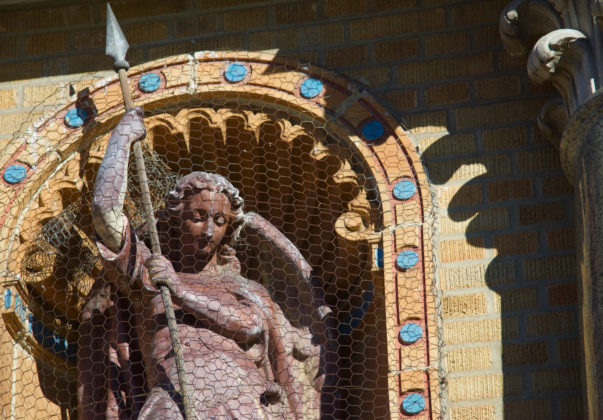Today, the church is closed.
In the late 19th century, Catholic French-Canadians decided they wanted their own parish. Before having a designated space for worship, they had masses in a school house on the corner of Broad Street and Capitol Avenue. Though they had secured land elsewhere in Frog Hollow, they ended up making a trade for the property at Park and Putnam streets. St. Anne’s was originally built as a wooden structure in 1892.
Besides providing what one would expect from a church — services, education — the building served the French-Canadian community more broadly. In 1904 the French-American Naturalization Club met here, providing paperwork assistance for those seeking citizenship. There were church fairs, political events, and live music. Le Club Democratique Franco-American met here, though later it would just go by the Franco-American Democratic Club. Le Cercle des Dames Françaises used St. Anne’s hall too. During World War I, someone representing the Hartford County League and Farm Bureau gave a demonstration on “meat substitution,” which doesn’t have anything much to do with this specific culture but I think it’s kind of funny that this needed to be more complicated than “just don’t eat meat.”

The congregation outgrew that building and in 1920, when fundraising was underway for a new one, the Courant had taken to referring to this population as French-American, as in, this church was meant for “all French-American people in Hartford, for all parishioners whether they live near the church or in remote parts of the city.”
To expand, they needed money. They far surpassed their goal, raising funds entirely within the Franco-American/French-Canadian community.

The brick Neo-Classical Revival style building standing at the corner now was completed in 1926.
That same year, Lyric Hall/Theater on Park Street hosted a convention for Connecticut’s speakers of French. It was, for the time, the largest gathering of French speakers in the state — somewhere around 700 people in attendance. Convention festivities were preceded by a mass at St. Anne’s.
About a decade later, the church drew another crowd. Between 500-1000* members of 20 French organizations participated in a parade for the feast of St. Jean de Baptiste. It began at St. Anne’s, moved north on Putnam Street, east on Capitol Avenue, south on Broad Street, and then west on Park Street, finishing at the church.
Even as the neighborhood demographics shifted, French masses continued to be offered, and Spanish services were added.

Today, the church is closed.
The nearby Beanpot Restaurant, originally a French-Canadian joint, shut down more recently.
People have a knack for not fully appreciating what Hartford’s got ’til it’s gone, taking for granted just about every institution and organization there is, expecting the small businesses and houses of worship to operate in perpetuity without giving direct support. They will casually depart for the suburbs and exurbs, take their money with them, and then decry what their childhood home became. Cities are places of constant change, by definition, but if we want what we like to last longer, then we need to participate.
*The number is unclear because two accounts from the same newspaper gave different headcounts: one said 500, the other, 1000. It’s safe to say it was a decent turnout.
Unhidden Gems is a series published every other Monday, spotlighting one of Hartford’s treasures that sits right out in plain sight. These are restaurants, clubs, cultural centers, and other places that are either on or easily visible from one of Hartford’s main streets.

Odette Drouin Manning
I enjoyed reading the article about St. Anne’s church. It is a beautiful church where our family attended mass every Sunday. It is so sad to see that it is closed today.
Kerri Provost
Thanks for your comment, Odette.
It’s surprising to me that they decided to close this church, considering that it’s still a very lively part of Hartford where so many people live. The trend these days seems to be toward the storefront and pop-up churches…meanwhile a number of suitable, gorgeous buildings sit vacant.